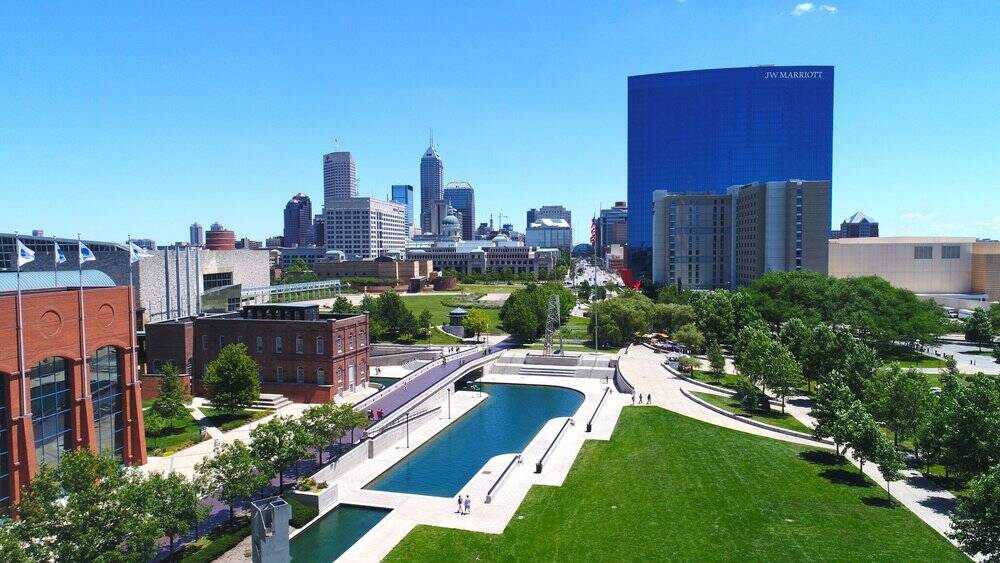
When Change Comes Fast, Resilience Is Key to Survival
Organizations wired for adaptation can surf the waves of crisis.
When changes happen—and they always do—it’s easy for organizations of any kind to get swept up in the fast-moving currents. But the strongest and most flexible businesses are best prepared to meet abrupt, even seismic, shifts in circumstance. And they’re positioned to ride those waves of change into the future.
COVID-19 hit the hotel industry hard, with a forecasted 50 percent decline in annual revenue, and 2020 occupancy rates lower than in the Great Depression. But its leaders demonstrated exceptional innovation and adaptation under the toughest conditions.
Here, Phil Ray, general manager of Indianapolis’ 1,012-room JW Marriott, shares his team’s experience adapting nimbly to the crisis circumstances, as well as four tips for strategy and best practices that association professionals can implement today.
1. Act quickly and decisively.
When the pandemic hit, there was no existing playbook for hospitality pros to consult. Instead, they had to create it on the fly and without delay. For Indianapolis, that meant forming a committee with other hotels in the community to “get out in front” of the situation. “We focused on putting together a few documents almost immediately to be able to help answer [guests’ and clients’] key questions,” Ray explains.
The team generated a guide called “Stay Confident,” which highlighted the brand and the company’s approach to safety. The hotel has 130,000 square feet of space, so the team also created a version of the document called “Meet Safe,” which outlined its approach to registration, meeting room setups, meal service, and more.
The six biggest hotels connected to the convention center formed a committee known as the Tourism Recovery Group, and soon expanded it to include attractions, restaurants, and outdoor venues. “We said, as a community, how do we recover faster than everybody else? And how do we recover safely? And how do we win as a city and get our bigger share and recover faster?” he says.
Thinking fast—and thinking big—hotels in the top convention city worked together to offer the country’s first city-wide hybrid discount and zero attrition. And the destination adapted quickly to welcome those in-person attendees safely.
As the circumstances unfolded in the spring, an air of panic permeated across industries. But for Ray’s team, the approach was calm and steady, using its collective expertise, and modeling authority and confidence. “Versus just sitting back and saying ‘poor us,’ we worked to make sure of our staff’s and clients’ safety,” he says. “It was scary, but we really focused on what we could control, and communicate what we did know.”
2. Communicate abundantly.
Even for the most seasoned executives, extra communication is key to success in uncertain times. This means sharing best practices and early lessons learned across shareholders and team members, whether virtually or safely in person.
“We quickly learned how to be proficient at Zoom and team calls, and even just by phone. It all evolved so fast that we just had to go on with ongoing communication and collaboration,” Ray says. “It takes a huge amount of communication and partnership to be able to say, ‘Let’s figure out how to do this.’ We talked a lot about being flexible and nimble, to be able to react quickly.”
3. Call audibles.
An organization is best prepared to be resilient in the face of crisis when the company nourishes a culture comfortable with the art of the pivot. “Being flexible and nimble was really important to be able to react and react quickly,” he says. “We’re learning new things and continually evaluating the need for change.”
And when the team sees room for improvement under fast-changing conditions, the group regards it as not a failure of existing policy but an opportunity to improve. As an example, the JW found itself suddenly busy when a basketball tournament took over the convention center. “It went suddenly from a quiet to a big crowd, so there were a lot of people that gathered in our lobby bar,” Ray says, explaining that the bar was closed but still had seating and tables. “Obviously, we were not looking for people to gather like that, so the next weekend, we moved a good chunk of the furniture out so people wouldn’t use it as a gathering place.”
The team made similar adaptations for other elements of dining and room service. “There’s just a lot of figuring things out as you’ve seen it and just really being creative and saying, OK, this is what the challenge is, how do we make it better?”
He says, “It’s almost like thinking like a football team coach on the field. You see what’s happening, and make changes for the second half.”
4. Stay consistent.
Even amid the need for constant change, a resilient organization is one that maintains consistent quality and messaging. The JW focused early on training the staff for the new safety protocols including temperature checks, a wristband screening system, and messaging mask mandates to guests.
“If we were consistent, it just gave guests so much confidence that we did know what we’re doing,” he says. “Confidence that we would be consistent and follow through.”
Visit Indy proudly serves as the official sales and marketing organization for USA Today’s “#1 Convention City in the U.S.” Check out Indy’s newest hotel Bottleworks, opening December 2020, and The Westin’s largest renovation, to be completed in February 2021.
(Visit Indy)





